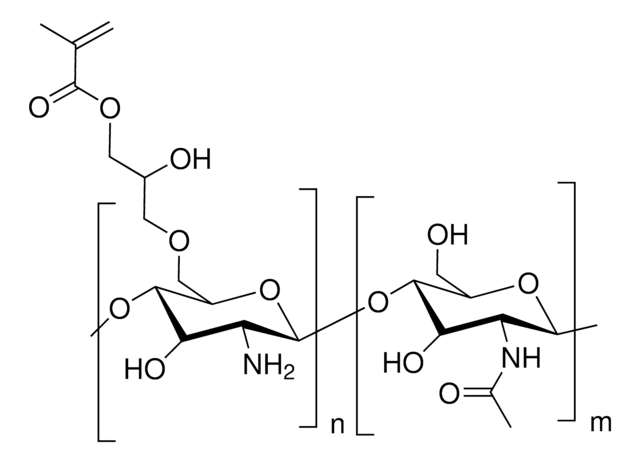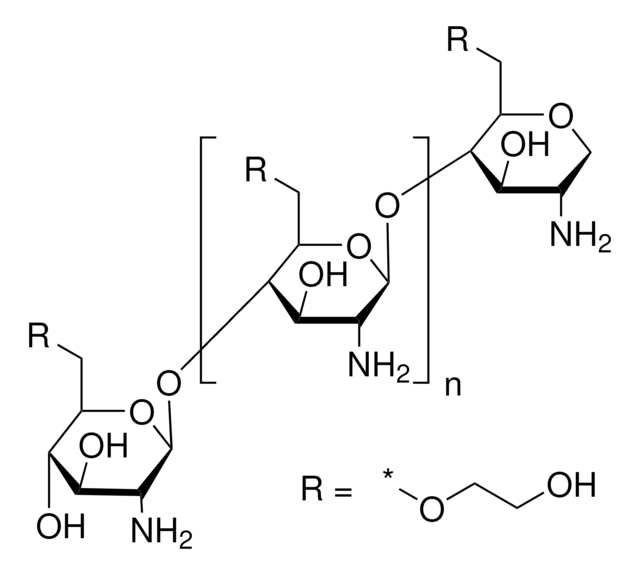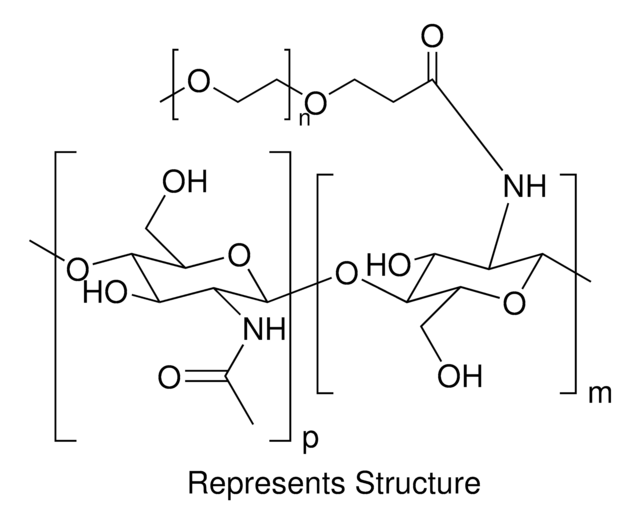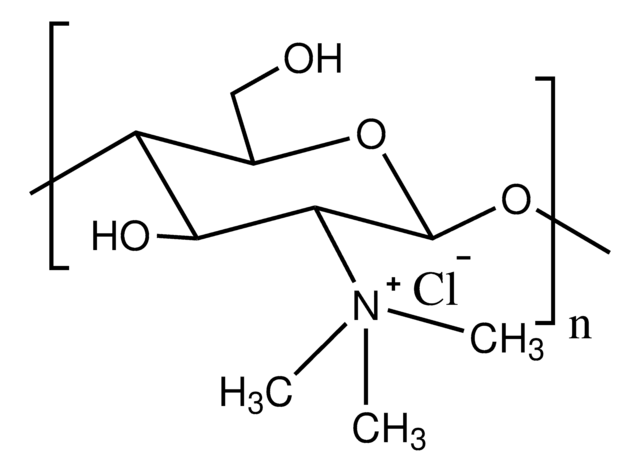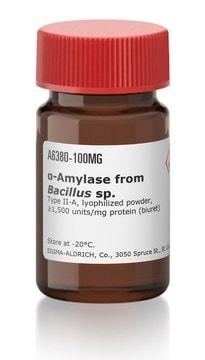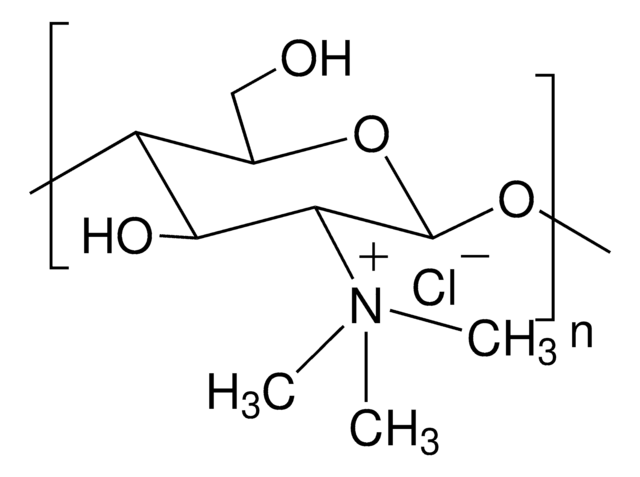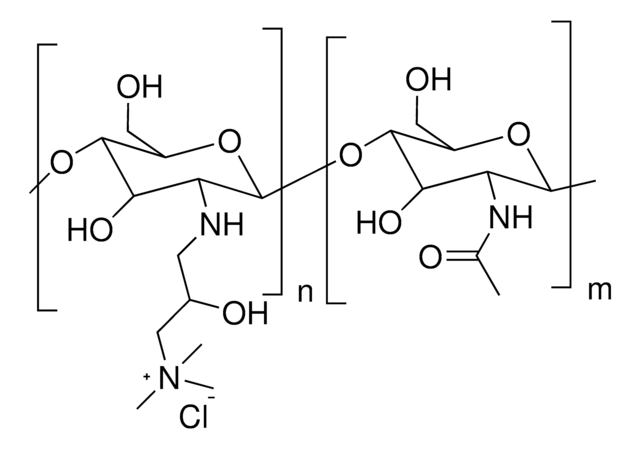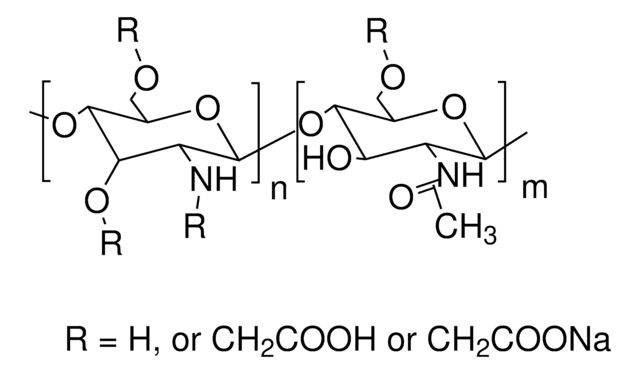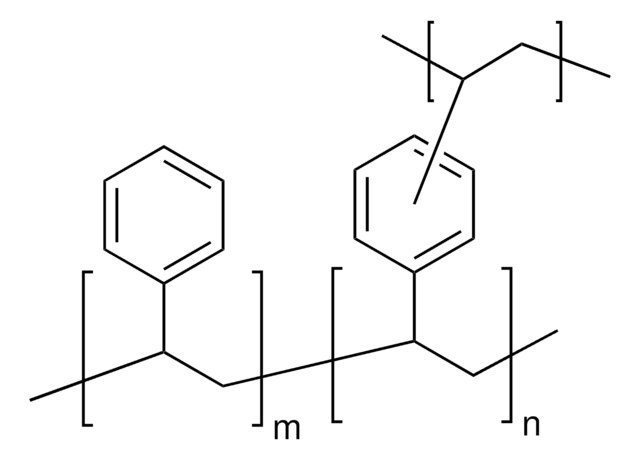926175
Glycol Chitosan Methacrylate
Degree of methacrylation ∼45%
Synonim(y):
Chitosan hydrogel, Crosslinkble chitosan, Glycol chitosan, Methacrylated glycol chitosan
Zaloguj sięWyświetlanie cen organizacyjnych i kontraktowych
About This Item
Wzór liniowy:
[C14H25NO8]n [C10H17NO6]m
Kod UNSPSC:
12352201
NACRES:
NA.23
Polecane produkty
Poziom jakości
Postać
powder
kolor
white to light yellow, light brown
przydatność
conforms to structure for NMR
temp. przechowywania
2-8°C
Zastosowanie
Glycol chitosan is soluble at neutral pH and possesses potentially useful biological properties such as good biocompatibility accelerate wound healing, and antimicrobial properties, and it is less toxic and provide to stimulates chondrocyte growth at low concentrations. Methacrylated glycol chitosan is photo- and thermally cross-linkable and is used as a precursor for the preparation of hydrogels used in biomedical applications including drug delivery, tissue engineering, and 3D bioprinting.
This page may contain text that has been machine translated.
Kod klasy składowania
11 - Combustible Solids
Klasa zagrożenia wodnego (WGK)
WGK 3
Temperatura zapłonu (°F)
Not applicable
Temperatura zapłonu (°C)
Not applicable
Wybierz jedną z najnowszych wersji:
Certyfikaty analizy (CoA)
Lot/Batch Number
Przepraszamy, ale COA dla tego produktu nie jest aktualnie dostępny online.
Proszę o kontakt, jeśli potrzebna jest pomoc Obsługa Klienta
Masz już ten produkt?
Dokumenty związane z niedawno zakupionymi produktami zostały zamieszczone w Bibliotece dokumentów.
Zhilong Shi et al.
Biomaterials, 27(11), 2440-2449 (2005-12-13)
Although total joint replacement has become commonplace in recent years, bacterial infection remains a significant complication following this procedure. One approach to reduce the incidence of joint replacement infection is to add antimicrobial agents to the bone cement used to
Modified chitosan hydrogels as drug delivery and tissue engineering systems: present status and applications
Tapan Kumar Giri Amrit Thakur, et al.
Acta Pharmaceutica Sinica. B, Volume 2, Issue 5, 439-449 (2012)
K Y Lee et al.
Biomaterials, 16(16), 1211-1216 (1995-11-01)
Chitosan was selectively N-acylated with various carboxylic anhydrides, e.g., acetic, propionic, n-butyric, n-valeric and n-hexanoic anhydrides, in the presence of methanol. The degree of N-acylation of about 20-50% was obtainable without occurrence of gelation by using carboxylic anhydrides of 0.3-1.2
Brian G Amsden et al.
Biomacromolecules, 8(12), 3758-3766 (2007-11-23)
Glycol chitosan is a derivative of chitosan that is soluble at neutral pH and possesses potentially useful biological properties. With the goal of obtaining biocompatible hydrogels for use as tissue engineering scaffolds or drug delivery depots, glycol chitosan was converted
Evaluation of the Properties of Soluble Chitosan and Chitosan Microspheres
Carreno-Gomez, B.; Duncan, R
International Journal of Pharmaceutics, 148 (2), 231-240 (1997)
Nasz zespół naukowców ma doświadczenie we wszystkich obszarach badań, w tym w naukach przyrodniczych, materiałoznawstwie, syntezie chemicznej, chromatografii, analityce i wielu innych dziedzinach.
Skontaktuj się z zespołem ds. pomocy technicznej